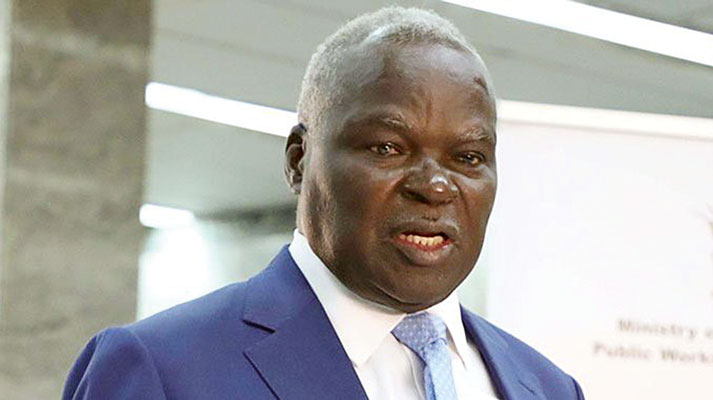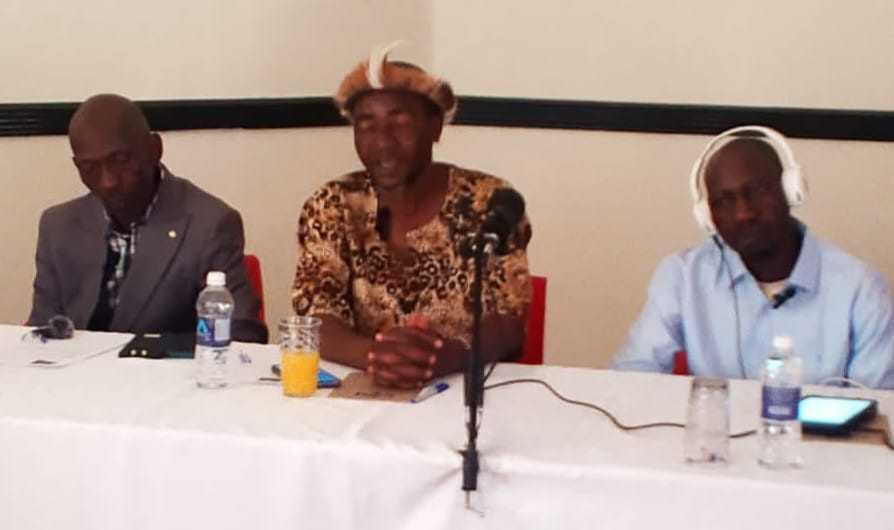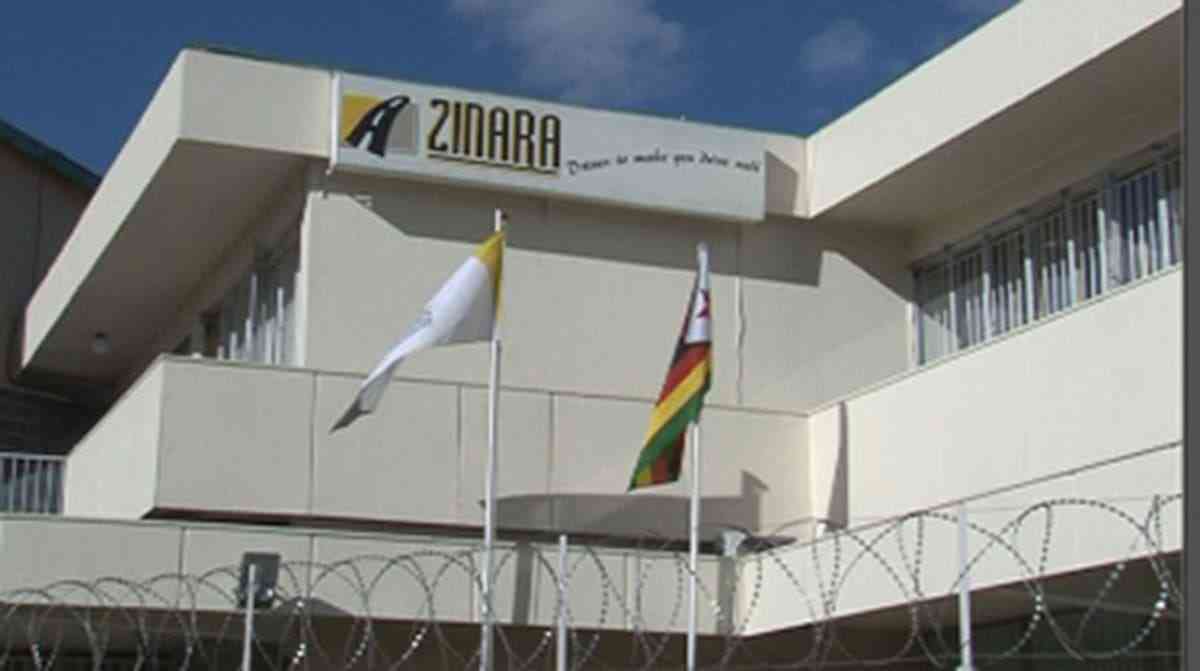
Ran Gold Mine, located on the edges of the mining town of Bindura in Mashonaland Central, sits on hilly terrain visible from miles away.
news in depth: BY TAPIWA ZIVIRA
Many parts of the mine have since been decommissioned, and artisanal miners have invaded the space.
Using rudimentary equipment, the artisanal miners have defaced what otherwise could have been a beautiful environment.
Upon entering the mining area, one is met with dozens of holes dug out by artisanal miners.
So chaotic are the mining activities that some have shafts dug out right in front of houses that form part of the mining compound, and throughout the day, men, women and children can be seen crushing stones with hammers.
“We take these stones to the mill, and from them we get a few grammes of gold,” said one of the artisanal miners sitting on a heap of pebbles that he had just prepared for the mill.
The chaos does not end there.
- Chamisa under fire over US$120K donation
- Mavhunga puts DeMbare into Chibuku quarterfinals
- Pension funds bet on Cabora Bassa oilfields
- Councils defy govt fire tender directive
Keep Reading
Right through the mining area, people, mostly young men in their teens and early 20s, can be seen milling around.
Apart from the sound of stones, and the loud chatter associated with such highly populated areas, the place exudes an unusual calmness that is enhanced by the fine Bindura weather.
So calm that for those not in the know, it would be impossible to figure out that the mine is a site of a disaster that is still unfolding weeks after a group of miners disappeared.
More than 20 people are currently buried under one of the mine shafts after it collapsed on November 25.
According to those interviewed by The Standard last week, the number of people still trapped underground at Ran Mine remains unknown.
“This shaft was very rich with gold and as such many people were just getting in freely and when the mine collapsed, no one could have been certain about the number of people, who were inside,” said one of the artisanal miners.
The government, which has been blamed for not prioritising disaster early warning systems and a shoddy response to the Ran Mine disaster, has since stopped the rescue mission as the area around the shaft continues to collapse due to the continuous heavy rains.
“The situation has gone worse because of the incessant rains and the ground has become sensitive and it is collapsing,” said Local Government minister July Moyo.
“Some of the families are here and we might move into the relief situation.
“We must move into the relief approach, which includes psycho-social understanding of what has happened and work with the families.”
As days drag on, and with the rescue and recovery mission on hold, some family members, who had travelled from different parts of the country to witness the process, have given up and returned home.
But for Tichaona Dekete’s mother, closure will only come when her son is retrieved from the mine, dead or alive.
She has been coming to sit in the tents pitched near the disaster site every day.
Accompanied by her sisters, the desperate mother hopes that someday, the weather will recede and the rescue and recovery process will resume.
So far, what exists is a wide trench and a hole about five metres wide, and each time there is are heavy rains, the hole swallows mounds of earth, reducing the chances of ever finding the trapped miners alive.
“I do not see the urgency in getting my son and others out, and right now, I do not know what to expect, but all I need is that even if they are dead, I would give my son a decent burial,” said Dekete’s mother.
The disaster, which comes on the back of many other similar incidents countrywide, has exposed government’s ineptitude in dealing with the environmental, health and safety issues arising from the disorganised proliferation of artisanal gold mining.
Early in November, six miners died after they had been trapped in a shaft located at Matshetshe Mine in Esigodini, while another five miners also died in September in a Chegutu mine shaft.
In February last year, 23 illegal miners died when interlinked shafts and tunnels at two mines in Battlefields flooded and in May of the same year nine miners died after they detonated explosives underground and were trapped.
In Februrary this year, two miners died and two others were injured after a tunnel at Globe and Phoenix Mine in Kwekwe collapsed and in that same month, another two miners were killed after another shaft collapse at Mosi Mine in Kwekwe.
In July, another two people died in Mbizo, Kwekwe, after an illegal gold mine they were prospecting in collapsed on them.
Human Rights watchdog, the Zimbabwe Peace Project (ZPP), which has consistently called on government to deal with the scourge of uncontrolled and politicised mining activities, some of which have ended in machete violence, loss of life and environmental damage, visited the disaster site.
Jestina Mukoko, the ZPP director, believes that government has a huge role to play in ending unnecessary loss of life.
“The right to life is sacrosanct and is guaranteed in the founding values of the constitution and what we see in these mining activities is a clear case of government neglect of basic safety, health and environment requirements,” Mukoko said.
“Since it has become government policy to allow artisanal mining, these activities should be controlled to ensure the safety of those engaged in the mining activities and to protect the environment.
“Government should put in place measures to ensure that mines run by small-scale miners have the basic safety provisions to avoid such kind of disasters.
“Prospecting should also be controlled so that there is a clear map of mining tunnels and escape routes so that we do not have such disasters where trapped people will be buried under the mines.
“We also urge government to prioritise its management of the disaster cycle, not just in the mining activities, but in all areas.”
So chaotic are the scenes at Ran Mine that a couple of metres from the disaster site, some miners could be seen digging for gold.
Inside the dark tunnels One of the miners, who only identified himself as Thomas, said theirs was a struggle for survival.
“Sometimes we go into the tunnels without getting permission from anyone and there we just get our loot and each person gets the full payment from their proceeds,” Thomas said.
“In cases where we get into mine claims owned by others, they give us US$5.00 as prepayment before we go into the tunnel.
“We then go down into the tunnel, armed with our digging tools and torches and where I work, I am underground for a maximum of 48 hours.
“We take out our sacks of pebbles and process and mill them and we share the proceeds equally with the claim owner.
“Sometimes there are disagreements and we may not get our money and one has to be extra careful.
“The tunnels are very uncomfortable. Sometimes there is little space that one has to dig while crouched.
“Opening up the tunnel can be dangerous as there is a risk of being crushed by the rocks from the roof of the tunnel.
“On a good week, I get US$50, but sometimes we do not get anything, and at times I can go for two months without getting anything.
“The money is never consistent.”
Asked if he was not afraid of dying, Thomas said:“I always feel it, but I have no choice.
“If I stay at home, I may not even be able to buy my own underclothes.
“To help me deal with the fear, I take a lot of marijuana when I go down into the tunnels.”
On politics, Thomas said: “We only know that this is about the ruling party and one just has to have an allegiance to the party, either silently or openly.
“There is no room for any other political sides.”










